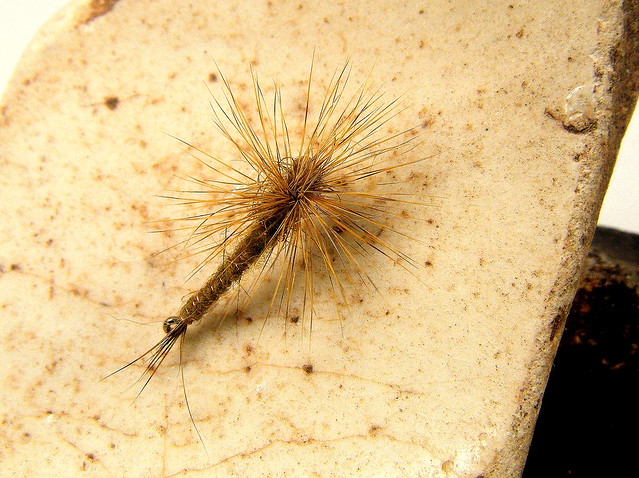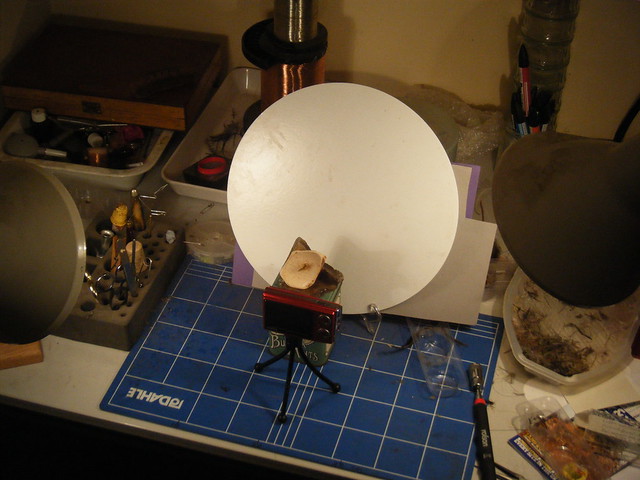w
Tips on Digital photography
Moderators: letumgo, William Anderson
- William Anderson
- Site Admin
- Posts: 4569
- Joined: Mon Feb 23, 2009 3:14 pm
- Location: Ashburn, VA 20148
- Contact:
Re: Tips on Digital photography
So I'm giving it a go. You dont have to use photobucket or anything?
Alright. That worked. I just have to shrink the crap out of all my pics. I'll get right on that.
w
w
"A man should not try to eliminate his complexes, but rather come into accord with them. They are ultimately what directs his conduct in the world." Sigmund Freud.
www.WilliamsFavorite.com
www.WilliamsFavorite.com
- letumgo
- Site Admin
- Posts: 13346
- Joined: Sat Feb 21, 2009 7:55 pm
- Location: Buffalo, New York
- Contact:
Re: Tips on Digital photography
Awesome! Your post made my day, William. I hope this thread encourages others to post their flies as well. Thanks for sharing. It is a well tyed beautiful pattern.
Ray (letumgo)----<°))))))><
http://www.flytyingforum.com/index.php? ... er=letumgo
"The world is perfect. Appreciate the details." - Dean
http://www.flytyingforum.com/index.php? ... er=letumgo
"The world is perfect. Appreciate the details." - Dean
-
daringduffer
- Posts: 2195
- Joined: Sun Feb 22, 2009 5:11 am
Re: Tips on Digital photography
I don't believe this!! I can now share one of my sources uf dubbing material. As you can see he has a lot of shades and some of his underfur took on the turmeric dye beautifully.
When we lost our house last year he had to move to "Mike Brave" - my fishing companion for 35 years. I still comb him through often (the cat, that is), taking care of everything. The upper picture is taken with a Pentax Optio W90, the lower with an older Canon Ixus. Mike Brave is the photographer.
I tried to attach another picture but it was too big. I will get some help to re-size it.
dd
When we lost our house last year he had to move to "Mike Brave" - my fishing companion for 35 years. I still comb him through often (the cat, that is), taking care of everything. The upper picture is taken with a Pentax Optio W90, the lower with an older Canon Ixus. Mike Brave is the photographer.
I tried to attach another picture but it was too big. I will get some help to re-size it.
dd
Re: Tips on Digital photography
I use a Canon Powershot SX 110. Always put the camera on a tripod and set the timer on two seconds. The problem is the light, there is too less light, and it is also difficult to see if the fly is hair sharp. I search a good background using sometimes a picture that I do print on an normal a4. Sometimes I use the cover of an old fishing magazine. Because I make a macro shot the background will be not sharp so the fly comes of the background. It gives the photo also some sphere.
The fly comes more beautiful on the forum if I use the IMG tag instead of the attachment. I use my own website to “host” the picture but you can also use photobucket.
I like Paint to reduce the amount of pixels. Of the programs that I have on my computer this old progam gives the best results. You can also crop your photo with Paint so your flies are the only subject of the photo. It is also possible to save your picture as jpg.
Mark, how do you make the thing that holds the hook up invisible?
Greeting
The fly comes more beautiful on the forum if I use the IMG tag instead of the attachment. I use my own website to “host” the picture but you can also use photobucket.
I like Paint to reduce the amount of pixels. Of the programs that I have on my computer this old progam gives the best results. You can also crop your photo with Paint so your flies are the only subject of the photo. It is also possible to save your picture as jpg.
Mark, how do you make the thing that holds the hook up invisible?
Greeting
There will allways be a solution.
http://www.aflyinholland.nl
http://www.aflyinholland.nl
Re: Tips on Digital photography
William, apart from anything else, great to see one of your flies... very coolWilliam Anderson wrote:So I'm giving it a go.
Andrew.
As for photography, can't add too much to what has been said so well by Ray - in fact i learned rather a lot - I had no idea you could attach photos directly to the furum! lol
Key points in macro photography:
1: Make sure your camera has a macro setting!
2: Exposure - you want the maximum depth of field you can get. If your camera has a manual setting, choose the smallest aperture you can, which corresponds to the biggest f number. If you use an auto setting, this is what your camera is doing for you. But it is always as well to understand why your camera is doing what it is. The smallest aperture means the longest exposure possible. This means, if you are to avoid camera shake, you need:
3: A tripod. If you are buying a camera, make sure it has a tripod bush (screw thread) so it can be attached to a tripod. Tripods need not be expensive. In fact, you can get very cheap table top tripods which are great for fly photography. Example here:
http://www.jessops.com/online.store/cat ... /Show.html
4: Lighting. You never photograph things - you photograph light on things.
5: Background. This is where you can get creative. One of the effects of such a short depth of field in macro photography (need that small aperture, remember?) is that anything in the backgroud is thrown completely out of focus very quickly. this can create some interesting effects and make the most unlikely materials good into backgrounds. Ruard uses this to good effect on this forum, I've noticed, and he is by no means alone. My background is just a normal house slate, thrown out of focus. I use this again because it is quick - I prop the slate up against the vice, swing in the two lights, click and it is done.
So, if choosing a camera for fly photography, this is what I would look for, consider essential:
1: macro setting (this will, amongst other things, take care of selecting that smallest possible aperture.)
2: Make sure it has a tripod bush.
3: Some manual control, at least. But this is maybe just me, and as you've probably gathered by now, I am a control freak
4: Buy the best you can afford, given its degree of priority for you, and your available budget! By and large, you get what you pay for, and the more you pay will get you better optics and image resolution. But, the good news is, you can get more than acceptable results for a reasonably modest outlay. I once did some fly shots with a fuji fine pix compact, just to show what was possible. I'll try and dig them out.
5: Invest a little bit of time understanding the basic mechanics of photographic exposure - the interaction between shutter speed and aperture, and its effect on depth of field. It will make your photographs better, at the very least you will understand what your camera is doing, and inform you when a bit of meddling might be in order.
Have fun!
Andrew.
"Inspiration exists, but it has to find you working." ~ Pablo Picasso 8)
Re: Tips on Digital photography
Found the photo. This is taken with just a small, automatic compact camera, available for about £70 I think. From a composition point of view, it is actually a very poor photo of a very good fly! (one of Roy's reverse paras - hope you don't mind me putting this up, Roy!). But hopefully it will give you some idea of what you can do with really basic equipment.
 DSCF1054 by ASGriffiths, on Flickr
DSCF1054 by ASGriffiths, on Flickr
And this is the set up, taking that photo:
 DSCF1055 by ASGriffiths, on Flickr
DSCF1055 by ASGriffiths, on Flickr
And then fiddled around with just a bit in Picassa, the free photo editing software that Ray mentioned.
The camera is a Fuji fine pix - cracking little cameras for the money.
Andrew.
 DSCF1054 by ASGriffiths, on Flickr
DSCF1054 by ASGriffiths, on FlickrAnd this is the set up, taking that photo:
 DSCF1055 by ASGriffiths, on Flickr
DSCF1055 by ASGriffiths, on FlickrAnd then fiddled around with just a bit in Picassa, the free photo editing software that Ray mentioned.
The camera is a Fuji fine pix - cracking little cameras for the money.
Andrew.
"Inspiration exists, but it has to find you working." ~ Pablo Picasso 8)
